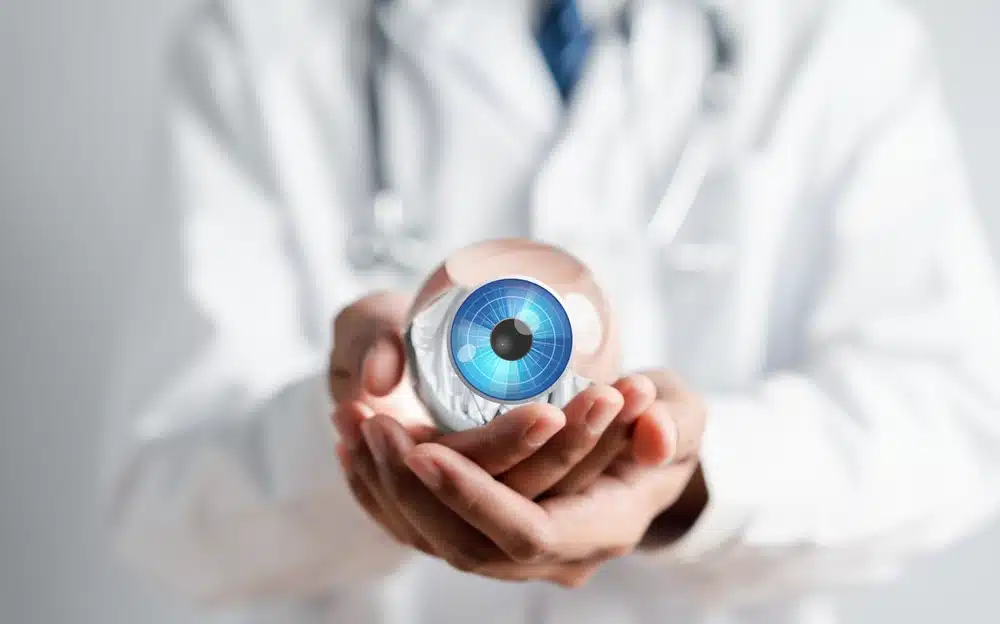
Advancements in eyecare have revolutionized how we diagnose and treat various eye conditions. With cutting-edge technologies, eye specialists can now offer more accurate diagnoses and tailored treatment plans. In this blog, we will explore some of the remarkable advancements in eye care that have transformed the field.
Contents
Optical Coherence Tomography (OCT):
Optical Coherence Tomography, commonly known as OCT, is a groundbreaking eye imaging test. It utilizes light waves to create detailed cross-sectional images of the retina. These high-resolution images provide invaluable insights into the various layers of the eye, allowing doctors to identify potential eye conditions such as macular edema, diabetic retinopathy, glaucoma, and central serous retinopathy.
The images produced by OCT have played a pivotal role in shaping treatment strategies for retinal diseases like diabetic eye disease and age-related macular degeneration (AMD). OCT is now considered an indispensable tool for prevention, diagnostics, and the formulation of precise treatment protocols.
Robotic-Assisted Eye Surgery
The global robotics market is rapidly expanding, with applications extending into various sectors, including medicine. Robotic-assisted eye surgery is a prime example of this technological evolution in eye care. This innovative approach empowers surgeons to perform delicate eye procedures like cataract extraction and corneal transplantation with unparalleled precision.
Equipped with robotic arms connected to high-resolution cameras, surgeons can execute these procedures with real-time visualization, minimizing surgery time, reducing errors, and enhancing patient recovery rates. This synergy of human expertise and robotic precision promises a brighter future for eye care.
Retinal Gene Therapy
Retinal gene therapy represents a groundbreaking noninvasive treatment option for eye diseases such as age-related macular degeneration (AMD) and retinitis pigmentosa (RP). This therapy harnesses the power of gene therapy by injecting a virus containing a healthy copy of the defective gene directly into the eye.
The benefits of retinal gene therapy are multifaceted, offering a noninvasive approach, minimal side effects, and the potential to restore vision in individuals who have already lost sight in one eye. This revolutionary therapy offers hope and the possibility of preventing further vision loss.
Artificial Intelligence
The rise of artificial intelligence (AI) in various applications has also made its way into advancing eye care. Advanced AI algorithms used in diagnostic technology can uncover various eye conditions with startling accuracy. AI retinal imaging, for example, can help detect eye conditions, including:
- Diabetic retinopathy
- Glaucoma
- Macular degeneration
This helps optometrists diagnose and monitor disease progression, such as diabetes or cardiovascular issues, much more efficiently. It also assists optometrists in making quicker diagnoses and creating personalized treatment plans.
Surgical Advancements
The advancements in eye care have also led to improvements in various eye surgeries, including increased accuracy, faster recovery times, and greater patient satisfaction.
Cataract Surgery
Updated technology, including laser-assisted techniques and advances in intraocular lenses, has helped refine the precision of cataract surgery. The implementation of femtosecond laser technology, which creates ultrashort laser pulses, prevents the laser from interacting with the surrounding tissues and reduces the risk of injury.
This improved eye care technology has dramatically enhanced post-surgery vision quality, leading to certain patients not even needing eyeglasses afterward.
Refractive Surgery
Alongside LASIK surgery for correcting refractive errors, there are now more surgical options available that improve healing time, reduce potential side effects and can address various eye issues.
- Small Incision Lenticule Extraction (SMILE): This treatment for nearsightedness and astigmatism involves a laser. It can reduce the need for eyeglasses or contact lenses.
- Advanced Surface Ablation: This is an alternative to LASIK, it is known to be safer and mildly more effective and accurate.
Contact Lenses
Contact lenses have come a long way in the last 20 years. As a generally preferred alternative to eyeglasses, they remain a critical treatment option for vision problems.
Evolutions in contacts have been made to address common complaints or issues with the lenses and their functionality. Some key advancements include:
- Oxygen permeability. This allows more oxygen into your eyes while wearing contacts, which means a reduced risk of corneal health issues.
- Advances in surface chemistry have made contact lenses more comfortable to wear and protective to the eye. Newer antimicrobial properties reduce the risk of infections.
Smart contact lenses are still in further development, but are designed to monitor eyes in real-time and provide comprehensive analysis for an improved vision treatment plan.
The Future of Eye Care
As we witness these remarkable advancements in eye care, it’s clear that the future holds great promise for individuals with different eye conditions. OCT, robotic-assisted eye surgery, and retinal gene therapy are transforming the landscape of eye care, offering improved diagnosis, precise treatment, and the hope of preserving and restoring vision. The ongoing evolution of technology and practices ensures that care will continue to advance, ultimately benefiting patients worldwide.
For more resources about eye care and advancements in the field, check out our blog at Laurier Optical.